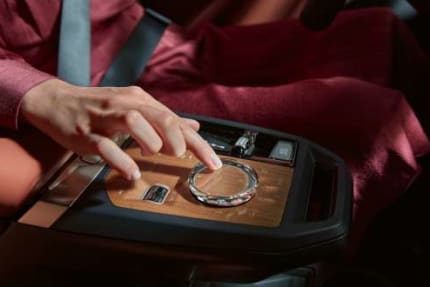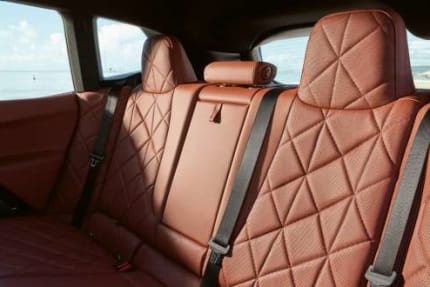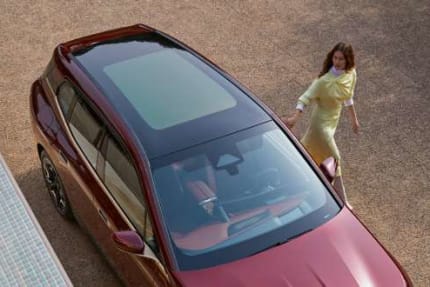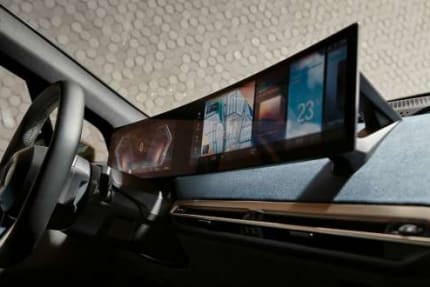



Born from a vision. Created for electric mobility. Thanks to efficient BMW eDrive technology and its fully electric all-wheel drive, the BMW iX achieves an exceptional range and delivers powerful acceleration from a standstill. The intelligent BMW Operating System 8 always keeps itself up to date and can be operated completely intuitively.





Minimalist interior design.
The interior design is modern and pared down to the essentials - a focus which can be noted in the displays and controls. As the central control element, the glassy iDrive Controller on the centre console is framed by an elegant control panel made of FSC- certified wood.

Lounge seats in the rear.
Thanks to the absence of the central tunnel, the BMW IX offers a spacious lounge atmosphere for the rear passengers. Additional options for the rear seats include heating and 3D loudspeakers integrated into the headrests. The rear seat backrest splits in a 40:20:40 ratio to extend the capacity of the luggage compartment.

Panorama glass roof.
The full-length, "Sky Lounge" panoramic glass roof creates a generous sense of space and a relaxed lounge atmosphere within the cabin. It can be electrochromatically shaded for more privacy and, since there is no need for an interior headliner, it offers passengers even more headroom with a modern feel.

BMW Curved Display.
The BMW Curved Display, installed for the first time in a production vehicle, serves as the central display and control element for the fully digital stage of the BMW iX. The 12.3" information display merges with the 14.9" Control Display to form a single unit and creates the impression of a free-floating picture frame on the instrument panel.


| Power in kW: | 385 |
| Driving Performance 0 – 100 km/h: | 200 |
| Electric range in km: | Up to 630 |
| Energy consumption kWh/100 km: | 26.6 |

The respective range of an electric vehicle depends on various factors such as driving style, route conditions, vehicle equipment, weather conditions and payload.
High average speeds (highway) reduce the range most significantly, while inner-city traffic leads to a higher range due to lower speed and higher recuperation shares (in contrast to vehicles with internal combustion engines). Furthermore, the range is reduced at low temperatures due to heating, and high temperatures with strong air conditioning. Regarding the special features/equipment, the selection of larger tire combinations generally reduces the range (if the aerodynamic disadvantage is not compensated for by a more closed wheel design). The rolling resistance class of tires is also relevant for the range: e.g. the use of a winter tire reduces the range compared to a Label A summer tire.
In the model selection, the communicated range is based on the WLTP (Worldwide harmonized Light-Duty Test Procedure) cycle.
WLTP enables a calculation of the range under prescribed driving conditions. WLTP assumes a defensive driving style with a route mix of city streets, country roads and highways.
The range indicator enables you to estimate the range under your typical driving conditions. The outer circle represents the calculated range value based on linear distances (not the actual street map), while the inner circle shows the calculated value -30% to take the real-life routes into account.
Setting a "sporty" driving style assumes 100% highway driving with an average speed of approximately 130 km/h and a dynamic overtaking style. The "economical" setting assumes defensive driving on country roads with an average speed of around 80 km/h. Settings in between produce a mixture of both.
Please fill in your details below.

We’re here to help and answer any question you might have. We look forward to hearing from you.